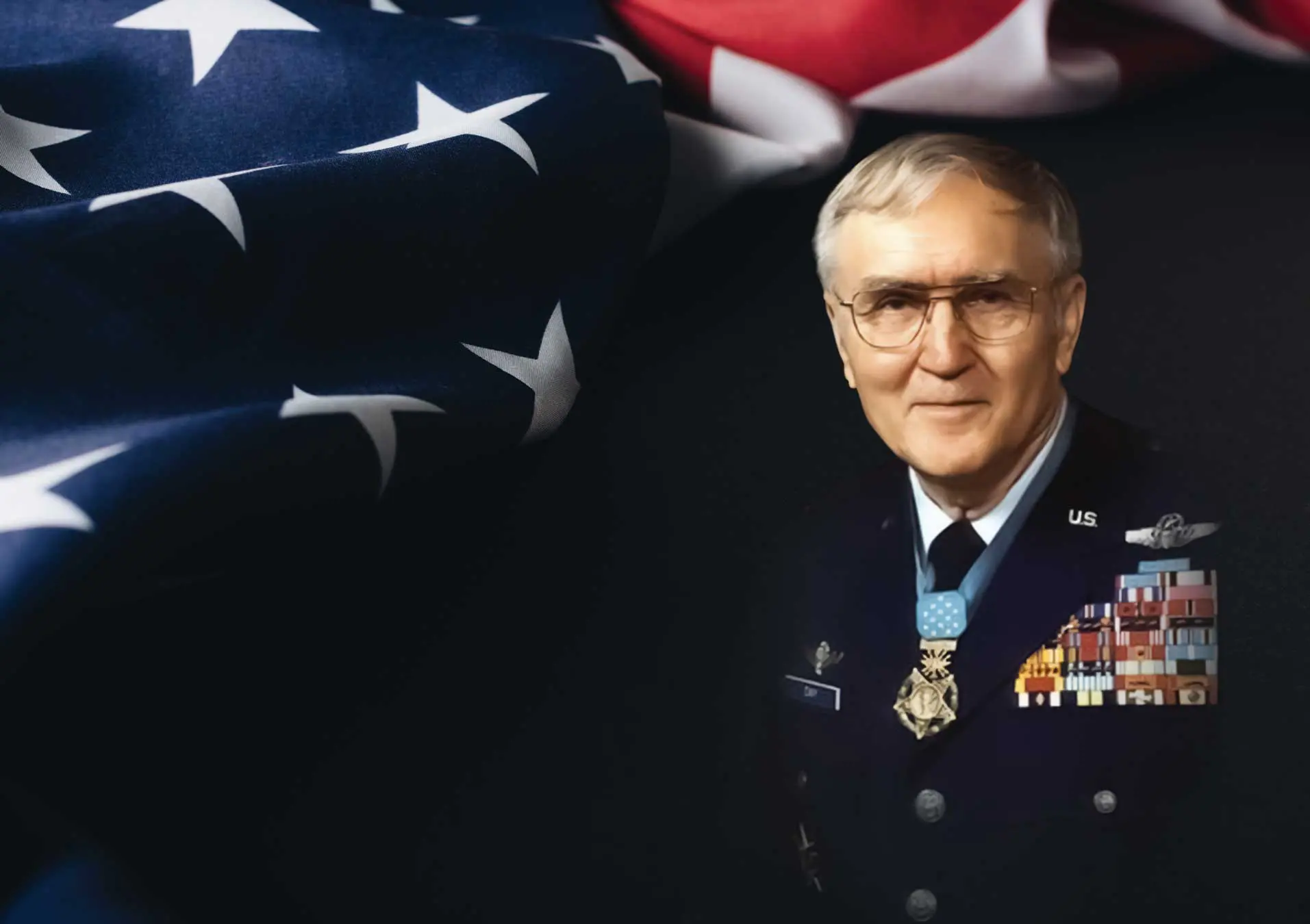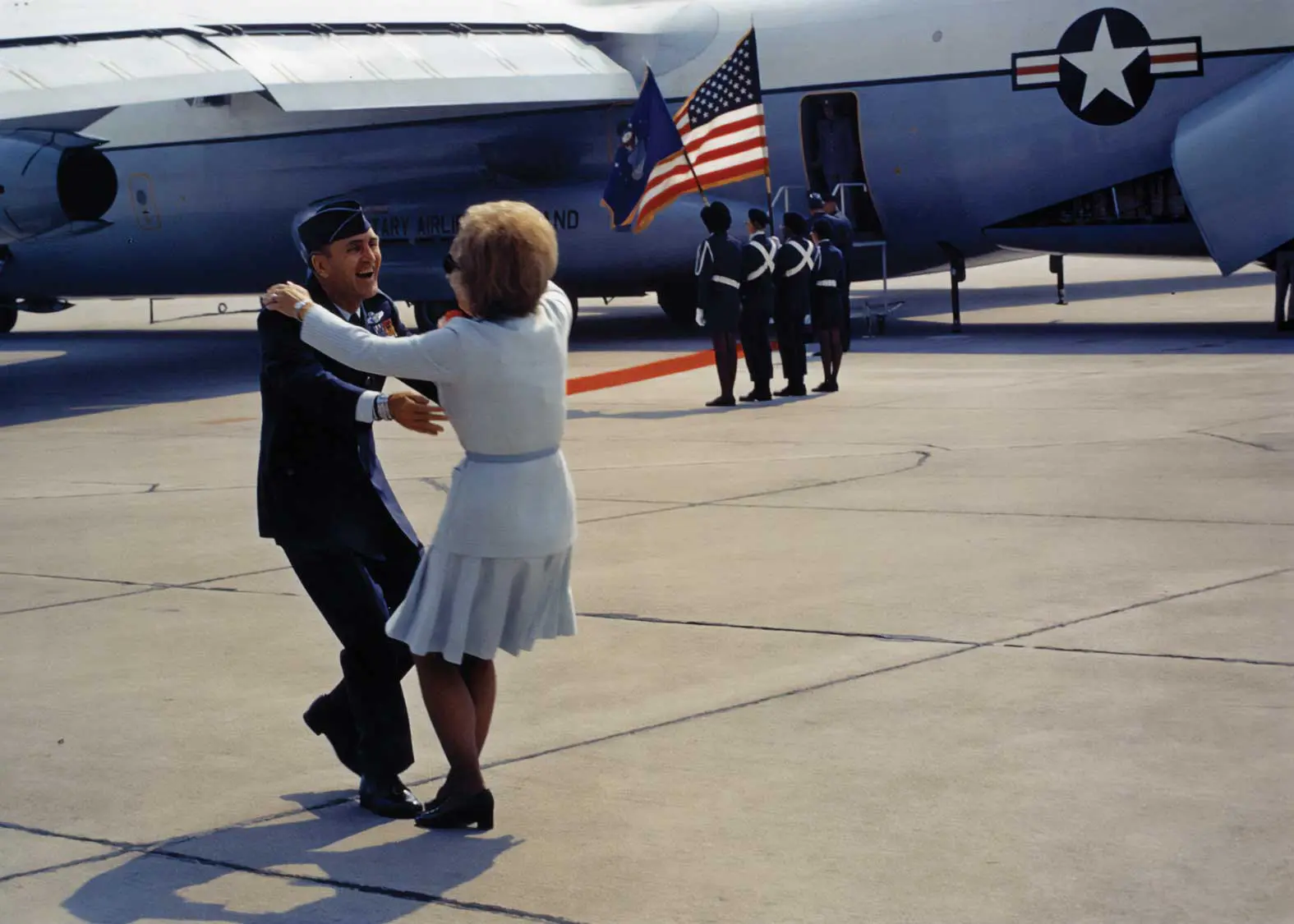UNWAVERING BRAVERY: A Heroic Narrative on Col George E. Day
By Ms. Tiffany L. Tolbert, Staff Writer
Col George Everette “Bud” Day lived multiple lifetimes. His dedication to the nation encompassed three different Armed Services—the U.S. Marines, U.S. Army, and U.S. Air Force—covering three different wars—World War II, the Korean War, and the Vietnam War. He is the second-most decorated military member in U.S. history, earning such distinctions as the Air Force Cross and the Congressional Medal of Honor. The Medal of Honor is bestowed upon individuals who, as described by the U.S. Department of Defense, distinguished themselves “through conspicuous gallantry and intrepidity at the risk of life above and beyond the call of duty.” Such a description fits Day’s actions perfectly.
It was during his third war as an Airman, when he was forty-three years old, that Day’s F-100 fighter jet was hit by enemy ground fire over North Vietnam. During his ejection from the aircraft on August 26, 1967, Day’s left arm was broken in three places, twice in the forearm and once in the upper arm; he was temporarily blinded in the left eye, and his left knee was dislocated as he hit the ground unconscious. Though the other member of his crew was quickly rescued, Day was taken by North Vietnamese captors to a prison camp.
Despite his severe injuries, Day was repeatedly interrogated, physically assaulted, and mentally tortured by a militia group of young people—as young as sixteen years old. Day’s injuries were neglected for two days before they were attended to crudely. Yet, he refused to communicate any U.S. military secrets to protect his fellow Airmen, who were still carrying out missions in the area.
When the militia group eased their guard, Day escaped into the jungle and began a trek toward South Vietnam. During his escape, he survived on a few berries and uncooked frogs and sustained more injuries—some of which were caused by fragments of a bomb or rocket.
“… Something landed very close to me, and I took a hit in the leg,” he recalled, noting that the concussion lifted him off the ground and slammed him back down. “My sinuses and eardrums were ruptured, and I was really nauseated … I lost my equilibrium and couldn’t even stand up,” Day remembered.
After a few days of making his way through the jungle, Day’s leg began to swell from the shrapnel. “That day, I lost about a mile because I started walking in circles. Somewhere about the tenth day, I started running out of control. I began to hallucinate and talk out loud. I didn’t realize what happens after you starve yourself. It would frighten me to hear myself talking out loud, and the hallucinations were just wild,” he recalled. After several unsuccessful attempts to signal U.S. aircraft, he was ambushed by the militia group. As Day was recaptured, he suffered gunshot wounds to his left hand and thigh and was later beaten for attempting to escape.
Day still did not respond to his captors’ inquiries for U.S. military secrets, for which he suffered more. “They had hung me up from the ceiling and paralyzed this [left] hand for about a year and a half. I could barely move my right hand. My wrist curled up, and my fingers were curling. I could just barely move my [right] thumb and forefinger,” Day recounted. From suffering continually, one day to the next, Day’s hands and arms never functioned properly again.
On March 14, 1973, after more than five years in captivity, Day was released with other American prisoners of war. Three days later, he was reunited with his wife Doris and their four children. Three years later, he was presented with the Medal of Honor by President Gerald Ford. Day’s bravery, strength, and determination in the face of utter darkness epitomize the ideals reflected in the award.
One of Days’ cellmates during the Vietnam War was U.S. Senator John McCain, who credited Day for his survival: “I owe my life to Bud, and much of what I know about character and patriotism … He was the bravest man I ever knew, and his fierce resistance and resolute leadership set the example for us in prison of how to return with honor.”
Given Day’s tenacity, he was back on flight status a year after his release as a prisoner of war and qualified as an F-4 pilot. He became Vice commander of the 33d Tactical Fighter Wing. He retired from active service in 1976.
Between the first two wars in which Day served and following his last, he attended Morningside College in Sioux City, IA, earning a Bachelor of Science degree, and then attended the University of South Dakota School of Law, earning a Juris Doctor. He was admitted to the bar of South Dakota. Moreover, he was awarded a Master of Arts from Saint Louis University, a Doctor of Humane Letters from Morningside College, and a Doctor of Laws from Troy State University. Day was admitted to the Florida Bar in 1977 and became a crusader for Veterans’ healthcare benefits. He died in Florida on July 27, 2013, at eighty-eight years old. In 2018, Day was posthumously advanced to the rank of Brigadier General.


